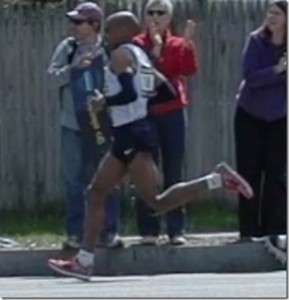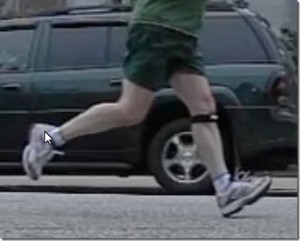To heel strike or not to heel strike. That seems to be the question on many people’s minds these days. And for good reason—there are far too many people getting injured due to poor running mechanics.
I teach people how to walk and work with a wide range of clients many of whom run recreationally, and thereby, more often than not, employ a heel strike. The first question for them is, “what technique do you use?” I am usually met with a blank stare as if I was speaking in tongues.
I have written on the blog before about changing my running technique a number of years ago using The Pose Method by Alexander Romanov. While this method might not be for everyone it has been hugely beneficial for me and got me out of being a heel striker, which had led to knee problems. I haven’t had a running injury since adopting this technique. But the key was finding a technique. Nothing is good for you by osmosis. Exercise requires the consciousness as any other discipline. We should take it upon ourselves to do it “right”.
Back to heel striking. Not to be contradictory but I am here to say that the heel strike can be both bad and good. It depends on the relationship of the foot to the shin on impact. Running is just an extension of walking and most recreational runners run exactly like they walk. I am always emphasizing the angle of the foot to the shin at the point of impact. If the foot doesn’t land at a right angle to the shin we don’t get to tuse the arches of our feet successfully.
Let’s take a look at the pictures below to get a clear sense of what I mean.

 The first picture is world class runner Meb Keflezighi, winner of the 2009 New York City Marathon. It is very clear from the picture that his heel strikes first. But the main difference between him and the recreational runner on the right is what happens in the relationship between the foot and the shin. Even though Meb Keflezighi starts with a heel strike his shin is well positioned to absorb and transfer weight successfully. Our friend on the right is going to compress the knee and ankle joints on impact due to the straight leg, and get no use out of the foot’s magical arches.
The first picture is world class runner Meb Keflezighi, winner of the 2009 New York City Marathon. It is very clear from the picture that his heel strikes first. But the main difference between him and the recreational runner on the right is what happens in the relationship between the foot and the shin. Even though Meb Keflezighi starts with a heel strike his shin is well positioned to absorb and transfer weight successfully. Our friend on the right is going to compress the knee and ankle joints on impact due to the straight leg, and get no use out of the foot’s magical arches.
To Heel strike or not to heel strike? Learn to run correctly so that weight transfers successfully from the feet all the way to the head and it won’t matter what hits the ground first.
h/t to runblogger.com for the images.
